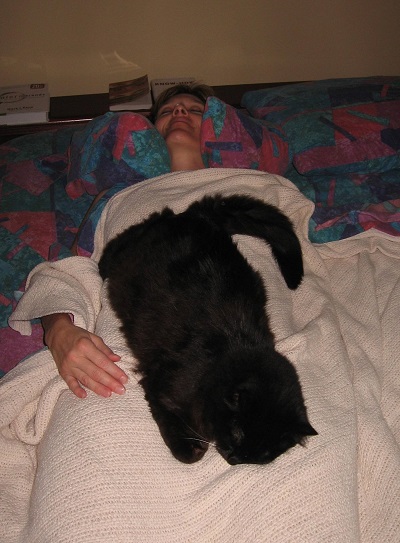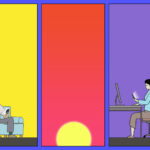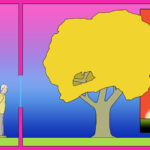After pre-dinner wine, dinner wine, and dishes clean-up wine, I took another glass of wine upstairs to find summer clothes for our November vacation to Florida. I discovered my divine black and turquoise sleeveless dress and darling black, strappy sandals to match and changed into them to show my husband a preview of vacation delights to come. I stepped onto the top stair and toppled head over heels, over and over, hitting the cornered walls of the landing, heaped like a rag doll, head snapping back for the final crack of my trajectory down the stairs.
“Are you okay?” I heard my husband’s anguished voice from the next room.
“Don’t come, don’t come,” I called. I hadn’t moved. I was all pain, terrified of what I had done to myself. I didn’t want him to see me broken and vulnerable, divine dress pulled to my waist, single-sandaled.
When I drink, I fall. Therefore, I should stop drinking.
That would be a logical, rational, reasonable conclusion for anyone to draw, especially a former teacher, new business owner, and bright, well-educated, well-meaning person. In fact, to continue to drink would be illogical, irrational, unreasonable. It would also be heartless. Injuries hurt others, too.
I had bruises, no breaks. I didn’t stop drinking until over a year later. On our Florida vacation, I drank martinis as well as wine. That was not my first fall while drinking, nor would it be my last.
. . . . .
 I wasn’t able to have a child, but I adopted a little black cat washed up at the Tampa Humane Society after a hurricane. I loved her with all my child’s and childless woman’s heart. I would lean my face to her face and she would so delicately and tenderly touch her nose to my nose. When I was drinking, she broke my heart when she turned away from the alcohol on my breath, sometimes even bolting from me.
I wasn’t able to have a child, but I adopted a little black cat washed up at the Tampa Humane Society after a hurricane. I loved her with all my child’s and childless woman’s heart. I would lean my face to her face and she would so delicately and tenderly touch her nose to my nose. When I was drinking, she broke my heart when she turned away from the alcohol on my breath, sometimes even bolting from me.
But I didn’t stop drinking. She would die before I stopped.
. . . . .
Since I became abstinent from alcohol three years ago and became a member of the recovery community, people I love have returned to active use of alcohol as well as other drugs.
Beyond the terror of them hurting themselves irreparably – as I almost did, fall after fall – I experienced the devastating feeling of not mattering. I reached out to people I cared about with my whole self, my whole heart, my whole mind, trying to bring them back. I cried piteously in front of them, begged them with prayerful hands, calmly reasoned with them, avidly argued.
Nothing. I got nothing. I was nothing. They continued – some continue – to drink and use. I was a pencil mark on endless white paper, erased.
. . . . .
To stop drinking, I would need to recognize the cause-and-effect relationship between my drinking and my falling, to feel motivated, to make a decision, to initiate action, to follow through, and to not melt into a sobbing heap or fire into a furniture-throwing rage by perceiving Mt. Everest in the path rather than a pebble. According to the latest findings from addictions science research, the abilities I need to stop are the very abilities impaired by prolonged exposure to alcohol and other drugs.
No wonder 8 in 10 people with alcohol use disorder relapse in the first year, and 40-60 % of people with other drug addictions relapse in the first year. I’ve never seen a beheaded chicken still run, but I’ve heard they do it. That’s what addiction to alcohol feels like to me. No head, all instinct.
“Fig. 4. Model of addiction as a disease of the brain characterized by perturbed interactions among the distributed networks that orchestrate balanced goal directed behaviors. From a behavioral economics perspective, addiction can be construed as the drug-induced consequence of a perturbed balance (in favor of system 1) between the proposed system 1 [visceral] and system 2 [cognitive]-centered processes that enable adaptive (efficient + flexible) decision making and goal-directed behaviors by mounting a proper situation-specific combination of automatic and cognitive responses…The balanced (or lack thereof) output of this distributed network is established, maintained, and expressed by the emergent relationships among the morphological, architectural, connectivity and functional levels of the brain. These are, in turn, determined by the combined pressures and influences exerted by genetic (e.g., affecting temperament, drug metabolism), epigenetic (e.g., drug exposure, parental style), developmental (e.g., fetal, brain, adolescent), and environmental (e.g., economic, social, built) variables.”
– Excerpt from a brilliant, succinct synthesis of the current state of knowledge about addiction, a caption under a figure in a 15-page research paper, 5 pages of which are hundreds of references in tiny print, by N. Volkow, R. D. Baler, Addiction science: uncovering neurobiological complexity, Neuropharmacology, 2014
What we believe we all have – that we are people and people can decide what’s right for them and get it done – isn’t true for people struggling with addiction. It’s altered, broken, even absent.
When I drank and breathed into my cat’s face, and her brain’s executive functioning – unlike mine – was still intact and she instinctively recoiled from a known neurotoxin, my heart ached agonizingly. But my head could not fathom that my hurt heart was a problem, that problems have solutions, that I could or should solve the problem, or that I had the ability to solve problems. I just hurt.
I think of all the little girls and little boys looking up into the eyes of their mothers and fathers who just won’t stop drinking or using and I can barely stand it. My parent looks like a person. People can make choices, can’t they? Then why are they choosing to drink and use and to keep hurting and neglecting me? If I were truly lovable, they would stop. I must be very, very bad. I must not matter at all.
. . . . .
It’s hard not to take persons personally. When “the turn” happened in me, when I shifted from someone who chose to drink to someone who couldn’t not drink, I was beyond any person’s – any being’s – reach. Even my own.
. . . . .
My darling, my darling, I would have done anything for you. The “I” in that sentence is no longer what it was. So much has been shifted, altered and damaged. And so many influences like so many sleeping dragons have been awakened by my use. I can barely hear myself think for their roaring.


What a loving, moving, heart-wrenching post. Sending hugs & purrs from all our cats who have preceded us. They’re waiting on the other side of the Rainbow Bridge.
Excruciating to write, Janeson! Thank you so much for hearing the love!